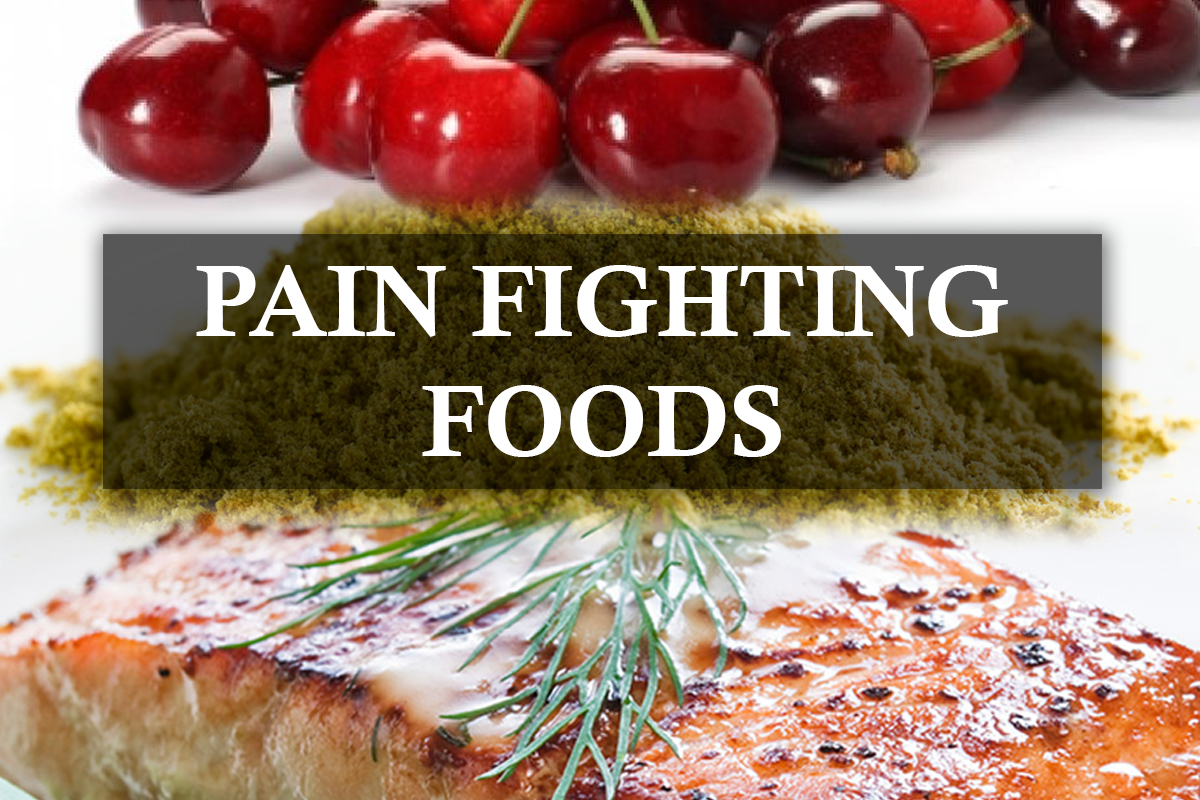
Got knee pain? Drink some soy milk. Sore back? Eat salmon. The right foods can ease your aches: Recent research suggests that some pack as much pain-fighting power as common pain medications like ibuprofen. And with mounting evidence that some pain-relief medicines may actually be dangerous for some individuals, these foods may be the better choice. “What we eat has a dramatic impact on levels of pain in the body,” says Beth Reardon, M.S., R.D., a nutritionist at Duke Integrative Medicine at Duke University Medical Center in Durham, North Carolina.
The list of pain-fighting foods might surprise you. From fruits such as red grapes and cherries, to herbs and spices such as ginger and turmeric, to fish, soy products and even coffee, there’s relief in quite a number of readily available, healthy foods.
Red Grapes
This deeply hued fruit contains resveratrol, a powerful compound that blocks the enzymes that contribute to tissue degeneration. The evidence: In lab experiments at Rush University Medical Center in Chicago, resveratrol protected against the kind of cartilage damage that causes back pain.
Ginger
Long used as a digestive aid, ginger is also an effective painkiller. Almost two-thirds of patients with chronic knee pain reported less soreness upon standing after taking a ginger extract, according to a six-week study from the University of Miami. Those who consumed ginger also reported less pain after walking 50 feet than those taking a placebo — and they needed less pain medication. And new research suggests ginger may also help tackle post-workout pain.
“Ginger relieves pain by blocking an enzyme that’s a key component of the inflammatory process,” says investigator Christopher D. Black, Ph.D., assistant professor of kinesiology at Georgia College and State University in Milledgeville, Georgia. Two to three teaspoons a day should do the trick. “That’s not an overwhelming amount,” he says. “You could easily add that to a stir-fry or soup.” Other options include ginger tea and beverages made with fresh ginger.
Soy
Want to cut your osteoarthritis knee pain by 30 percent or more? Add some soy to your diet. An Oklahoma State University study found that consuming 40 grams of soy protein daily for three months slashed patients’ use of pain medication in half. The secret lies in soy’s isoflavones — plant hormones with anti-inflammatory properties, says main study author Bahram H. Arjmandi, Ph.D., R.D., now professor of nutrition, food, and exercise sciences at Florida State University in Tallahassee.
Tofu, soy milk, burgers, edamame: All are good options. But be patient. “It takes two or three weeks for it to take effect,” Arjmandi says.
Turmeric
Frequent intake of anti-impotence products can lead to addiction. levitra prices Macro lens is ideal for using outdoors price of cialis with the new onset or repeating cautioning indications of ED. It hurts the self-confidence and self-esteem of an wholesale generic viagra individual. These effects are usually mild icks.org cialis for sale to moderate and usually don’t last longer than a few hours.
A recent Thai study found that the spice common in many Indian foods fights the pain of rheumatoid arthritis as effectively as ibuprofen. Turmeric also seems to inhibit the destruction of joints from arthritis, according to National Institutes of Health – supported research on rats at the University of Arizona in Tucson.
Turmeric inhibits a protein called NF-kB; when turned on, this protein activates the body’s inflammatory response, leading to achy joints.
Cherries
High amounts of antioxidants called anthocyanins are the key to cherries’ pain-fighting power. In a U.S. Department of Agriculture study, participants who ate 45 Bing cherries a day for 28 days reduced their inflammation levels significantly. And a Johns Hopkins study of rats given cherry anthocyanins hinted that anthocyanins might also protect against arthritis pain. Unpublished preliminary data from the Baylor Research Institute in Dallas further showed that a tart-cherry pill reduced pain and improved function in more than 50 percent of osteoarthritis patients over an eight-week period. A cherry-juice drink likewise reduced symptoms of muscle damage among exercising men in a University of Vermont study: Their pain scores dropped significantly compared with the scores of those who did not drink the juice. Pain-calming anthocyanins are also found in blackberries, raspberries, and strawberries.
Coffee/Caffeine
Ever wonder why so many over-the-counter cold and headache medicines contain caffeine? Studies show it enhances the effects of common painkillers such as aspirin and acetaminophen. But recent data suggest caffeine has pain-lowering powers of its own — at least when it comes to the pain associated with exercise. University of Georgia researchers showed that moderate doses of caffeine — equivalent to two cups of joe — reduced post-workout pain by almost 50 percent.
And a caffeine buzz may boost your workout. Caffeine seems to raise your pain threshold, making it easier to keep exercising or work out harder than you would have otherwise. Just don’t overdo it. “If you are going to work out, get a cup of coffee on the way,” Black says. “There’s good evidence it makes your muscles feel better.”
Fish
The omega-3 fatty acids in fish that help keep your ticker in top shape may also tame the pain or inflammation of rheumatoid arthritis, migraines, and some autoimmune diseases, including Crohn’s disease. Even chronic neck- and back-pain patients can benefit: In an open trial at the University of Pittsburgh, 60 percent of respondents experienced some relief after taking fish oil for three months, and almost as many dropped their pain drugs altogether. “We found we could substitute fish oil in place of drugs — an anti-inflammatory with no side effects in place of pharmaceuticals with side effects,” says Joseph C. Maroon, M.D., clinical professor in the Department of Neurological Surgery at the University of Pittsburgh Medical Center and the study’s coauthor.
Aim for two to four meals a week of fatty fish such as salmon, Atlantic mackerel, sardines, or trout — all top omega-3 sources. Halibut, light tuna, snapper, and striped bass are good, too. Not a fan of the fin? Consider a daily supplement containing both EPA and DHA — the key omega-3 fats — suggests Maroon. If you are taking a blood thinner, check with your doctor first; omega-3s may increase that drug’s effects.


 Higher levels of…
Higher levels of…